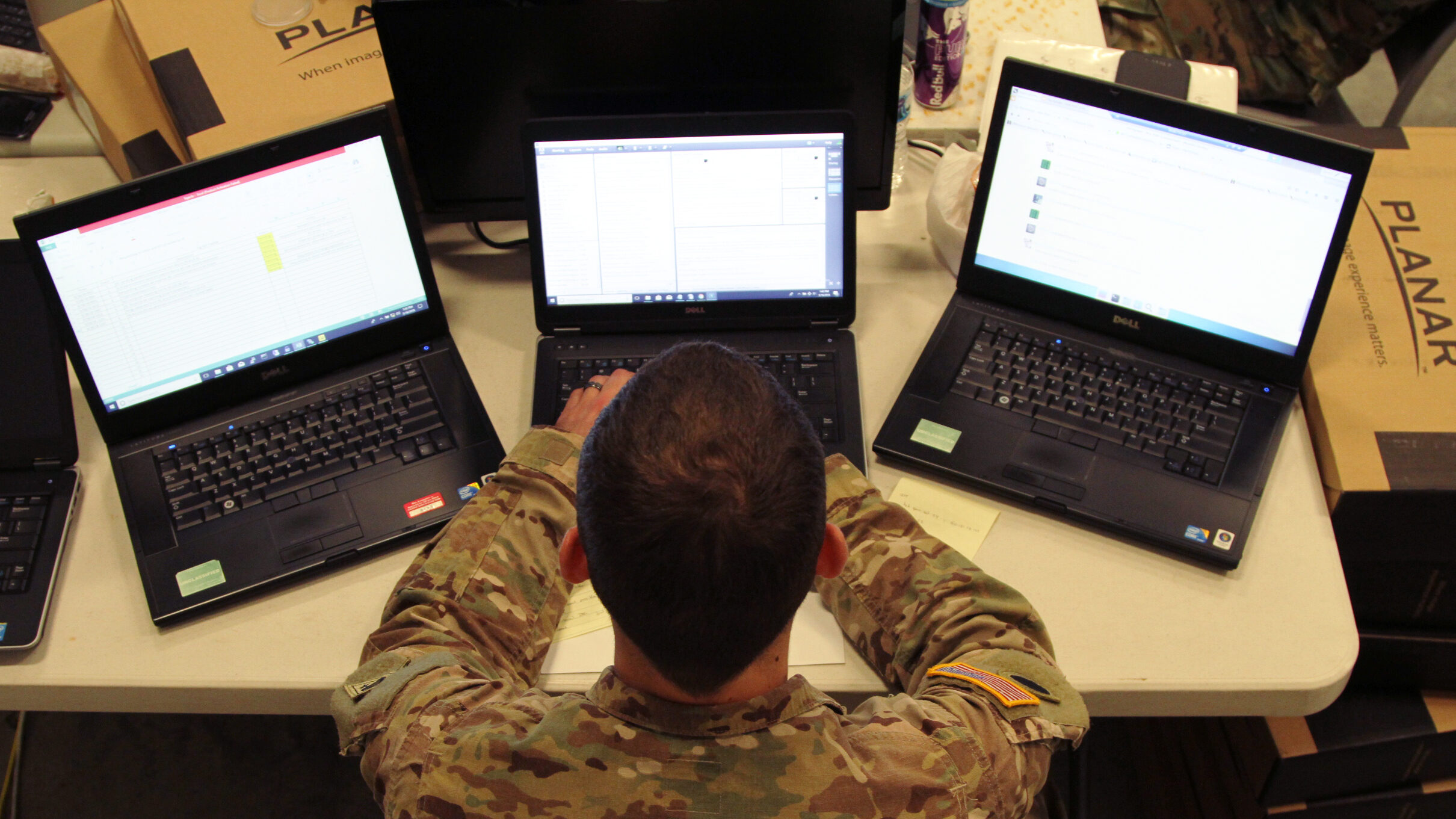
Army Sgt. Kyle Plumley, an intel analyst for Joint Force Headquarters out of Columbus, Ohio, works three laptop computers May 16 as part of Cyber Shield 2018 at Camp Atterbury, Ind. (Staff Sgt. Chad Menegay)
AUSA 2022 — Artificial intelligence analytics company BigBear.ai is developing an “intelligent automation platform” for the Army that a company executive says will streamline over a dozen outdated data systems into one solution, getting rid of manual processes as the service moves toward becoming more data-driven.
The company announced on Sept. 29 it had won a contract valued at $14.8 million for the Army Global Force Information Management System (GFIM), a cloud platform meant to provide a “holistic view” of the service’s data to make risk-informed decisions through an automated process.
“What that means is it’s going to empower senior leaders and the combatant commanders to do things like manning, equipping, training, resourcing the force more effectively,” Ryan Legge, president of BigBear.ai’s analytics sector, told Breaking Defense Wednesday. “It’s going to be a large-scale effort. So the end state solution is going to transition away from 14 legacy systems that the Army is using right now.”
Legge said the streamlining of the 14 legacy systems into one will provide real-time data for up to 160,000 users across the Army. The application won’t just be taking feeds of data from other systems, but will create and aggregate data, he said.
The company will use a combination of Appian, a business process management tool, and some of Palantir’s data and cloud hosting technologies to create the application.
The company’s work on GFIM will be a step in helping the service meet one of Army Secretary Christine Wormuth’s top objectives: ensuring the service evolves into a data-centric and data-driven one. It will also “sit on the edges” of the service’s Joint All Domain Command and Control (JADC2) efforts, although it’s not directly tied to it, Legge said.
“I wouldn’t say it’s directly related to JADC2 but a lot of what is done during these [enterprise-to-tactical] processes is going to be a part of the mission focus of what JADC2 delivers as a mission application,” he said. “It will definitely touch on a lot of those pieces when you’re looking at readiness to the force, training the force, equipping the force, manning the force. A lot of those sit on the peripheral of JADC2, which is going to feed that higher vision of what they’re looking to do with that solution.”
BigBear.ai is currently delivering three capabilities — an analytical tool, a force projection tool and a data layer — and building on its previous work with the GFIM. The company previously won a contract last November for the first phase of the project, during which the company delivered a prototype of the solution to the service. Phase two of GFIM will be broken into two different parts, Legge said.
“The first part of this phase we are under right now is going to be to… develop the future force capability to what they call a minimum viable product,” Legge said. “So an MVP. So it’s going to be getting this to almost a production-ready application. At that same time, we’re going to be developing a prototype for providing to the current force, which is the next phase that comes into this. So you can kind of see how they’re going to be running in parallel for a little bit.”























